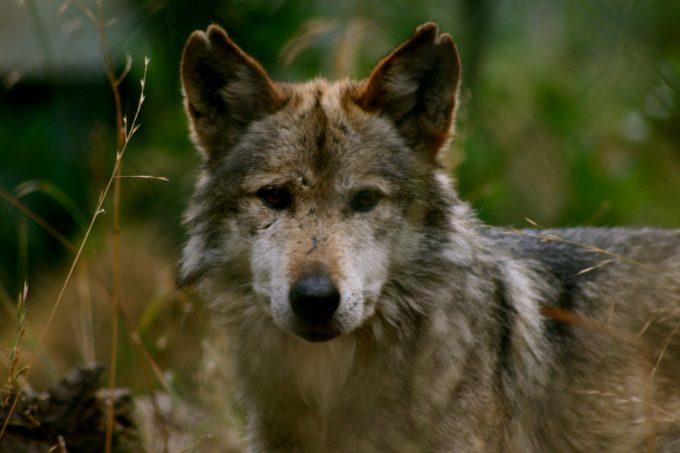The Case for Equal Protections for Wolves Throughout Their Range

Gray wolf. Photo: Jeffrey St. Clair.
Last week, the U.S. District Court of Northern California handed down a landmark ruling that struck down the Trump administration’s nationwide de-listing of wolves under the Endangered Species Act. Hailed as a major conservation victory, the ruling grants strong federal protections in the Great Lakes region and along the West Coast, as well as some Interior West states where wolf populations are just beginning to establish themselves. Unfortunately, the court ruling does nothing to curb the extinction agendas of the state governments in Idaho, Wyoming and Montana – the states where the threats to wolves are greatest.
If wolves deserve federal protections across the vast majority of the United States, based on the the best available science, then the need for federal oversight is even more compelling in these three states. The Biden administration now has the opportunity – indeed, the responsibility – to protect wolves under the Endangered Species Act throughout the western states, providing equal protection under the law.
All three states recently changed their laws and regulations to maximize the slaughter of wolves, seeking to turn back the clock and repeat the 19th Century wolf extinction policies cooked up by the livestock industry and a handful of rabidly anti-wolf hunting organizations.
Wyoming is the original bad-actor state, and adopted a state management plan that marks wolves for extinction across 85% of the state. It also subjected the remainder (the lands surrounding Yellowstone and Grand Teton National Parks) to aggressive levels of trophy hunting. Under this plan, it is perfectly legal to kill a wolf at any time of year, by multiple means, without so much as a bag limit or even a hunting license. It was Wyoming that showcased the horrific practice of “coyote whacking,” running down both wolves and coyotes with snowmobiles repeatedly, until they are killed. When a Wyoming legislator introduced a bill to ban this practice, it was swiftly killed in committee, granting a level of legislative approval to a barbaric practice that should land the offender in prison.
Idaho is doing its best to catch up, with the legislature passing a bill taking control of wolf management – over the objections of its own Fish and Game Commission – and authorizing year-round trapping throughout much of the state and allowing trophy hunters to purchase unlimited quantities of wolf tags with a goal of eliminating 90% of the state’s wolf population. The bill authorizes hunters to pursue wolves on ATVs and snowmobiles, allows aerial gunning, and allows baiting and night-vision goggles to be used. Ignoring other pressing needs like education spending, the State of Idaho also authorized $1 million in taxpayer funds specifically to kill wolves.
In Montana, aggressive expansion of hunting and trapping seasons has resulted in a bloodbath at the hands of trophy hunters. Some 24 of the wolves who live in Yellowstone National Park – including the entire Phantom Lake Pack – have been killed over the past year after wandering across the Park boundary into unprotected Montana lands where trophy hunting is authorized. The Indigenous group Protect the Wolves petitioned the states of Montana and Wyoming to block hunting and trapping within a Sacred Resource Protection Zone extending for 31 miles around both Yellowstone and Grand Teton National Parks, but state governments showed depraved indifference for the fate of National Park wolves, beloved by millions of Americans, authorizing hunting to extend right up to Park boundaries. The killings not only disrupt social relationships among Yellowstone wolves, but also interfere with scientific studies and disrupt natural processes.
All three of these anti-wolf state governments are actively “managing” (a generous euphemism for this killing free-for-all) wolves down to their target of 15 packs in each state, a level that fails to maintain a minimum viable population of wolves in the region. It’s a recipe for extinction, which is exactly what the livestock producers and their allies want, and exactly what the Endangered Species Act is intended to prevent. Protecting wolves in eastern Washington and Oregon is also needed to prevent excessive wolf killings in reprisal for livestock losses.
Recently, conservationists petitioned the Biden administration to list wolves as endangered throughout the West. The agency issued a positive 90-day finding, acknowledging that substantial scientific information indicates that listing could be warranted. It’s now time for the U.S. Fish and Wildlife Service to follow through on its legal obligations and extend equal federal protections for wolves throughout the western states, including those states where the wolves are presently targeted most aggressively for elimination.
No comments:
Post a Comment